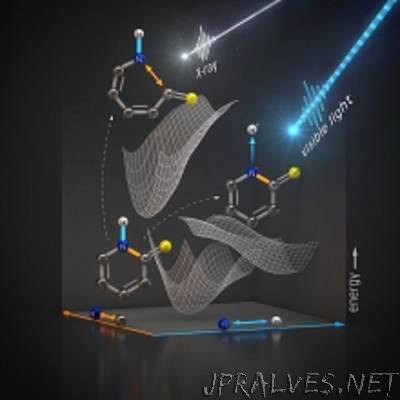
“When the molecules that carry the genetic code in our cells are exposed to harm, they have defenses against potential breakage and mutations. For instance, when DNA is hit with ultraviolet light, it can lose excess energy from radiation by ejecting the core of a hydrogen atom — a single proton — to keep other chemical bonds in the system from breaking. To gain insight into this process, researchers used X-ray laser pulses from the Linac Coherent Light Source (LCLS) at the Department of Energy’s SLAC National Accelerator Laboratory to investigate how energy from light transforms a relatively simple molecule, 2-thiopyridone. This molecule undergoes a chemical transformation that also occurs in the building blocks of DNA. The scientists looked at this process by probing the nitrogen atom in the molecule with X-ray pulses that lasted just femtoseconds, or quadrillionths of a second. The results, published in Angewandte Chemie, are a step toward better understanding what’s called “excited state proton transfers” in DNA and other molecules.”
